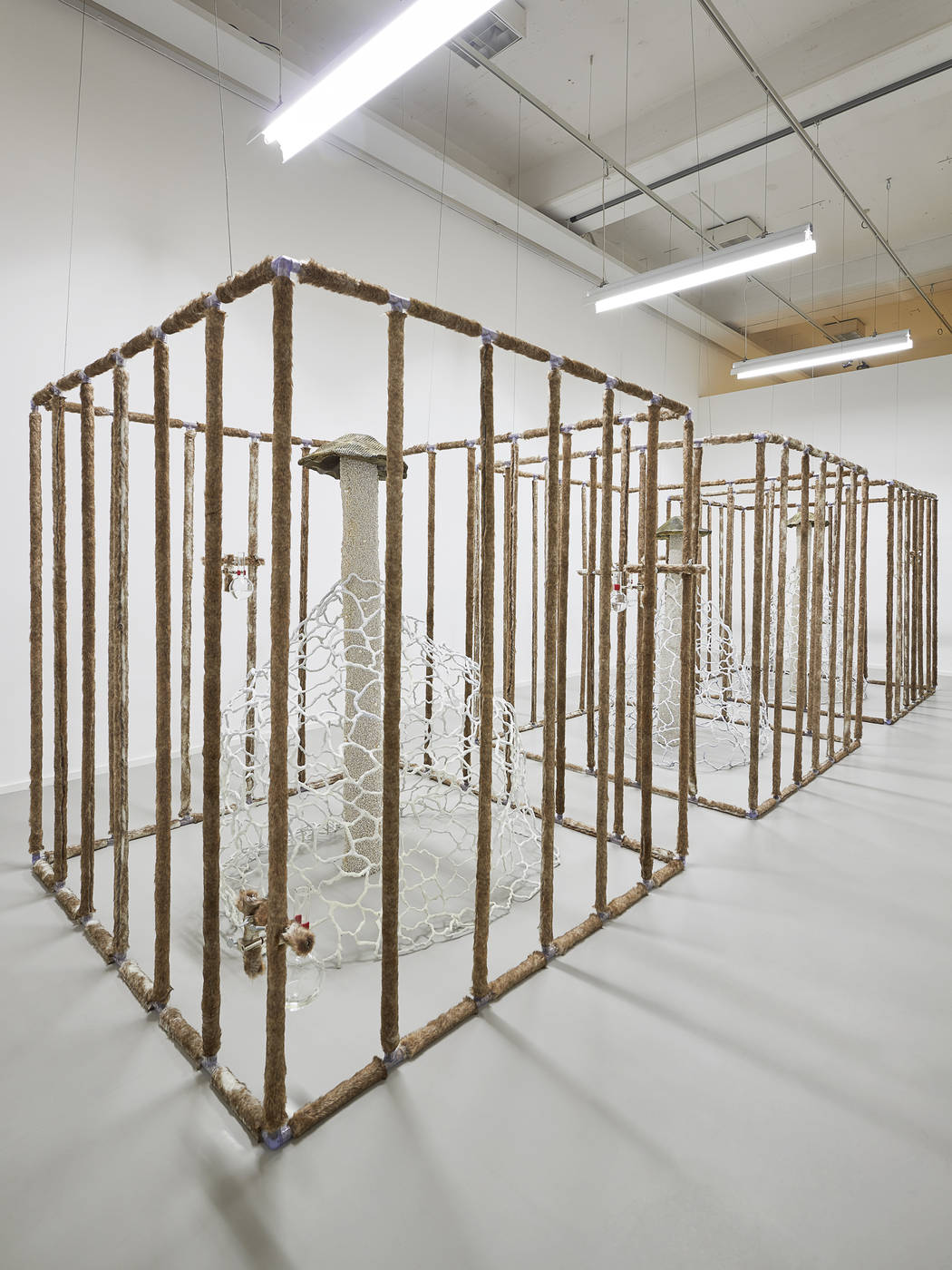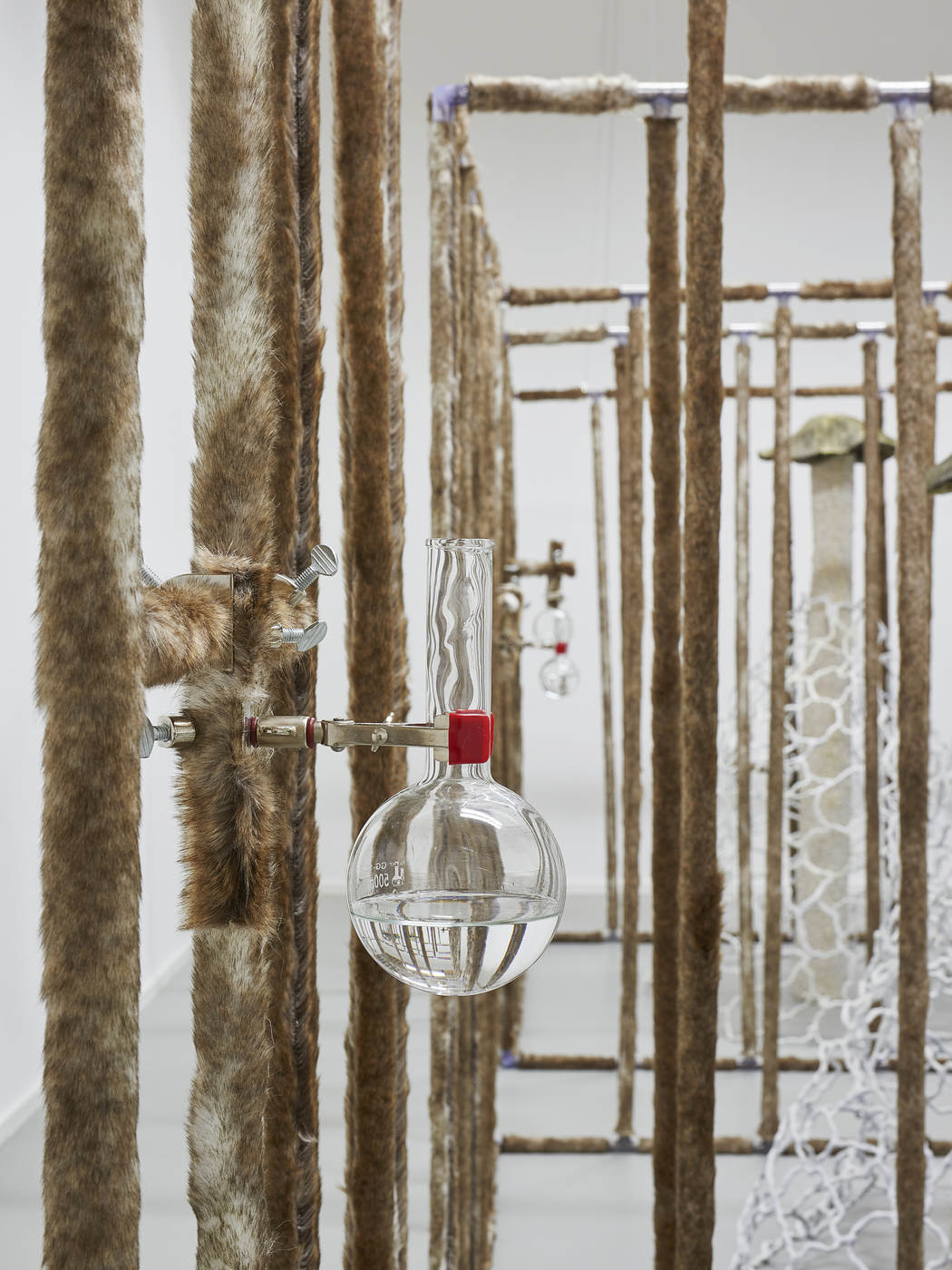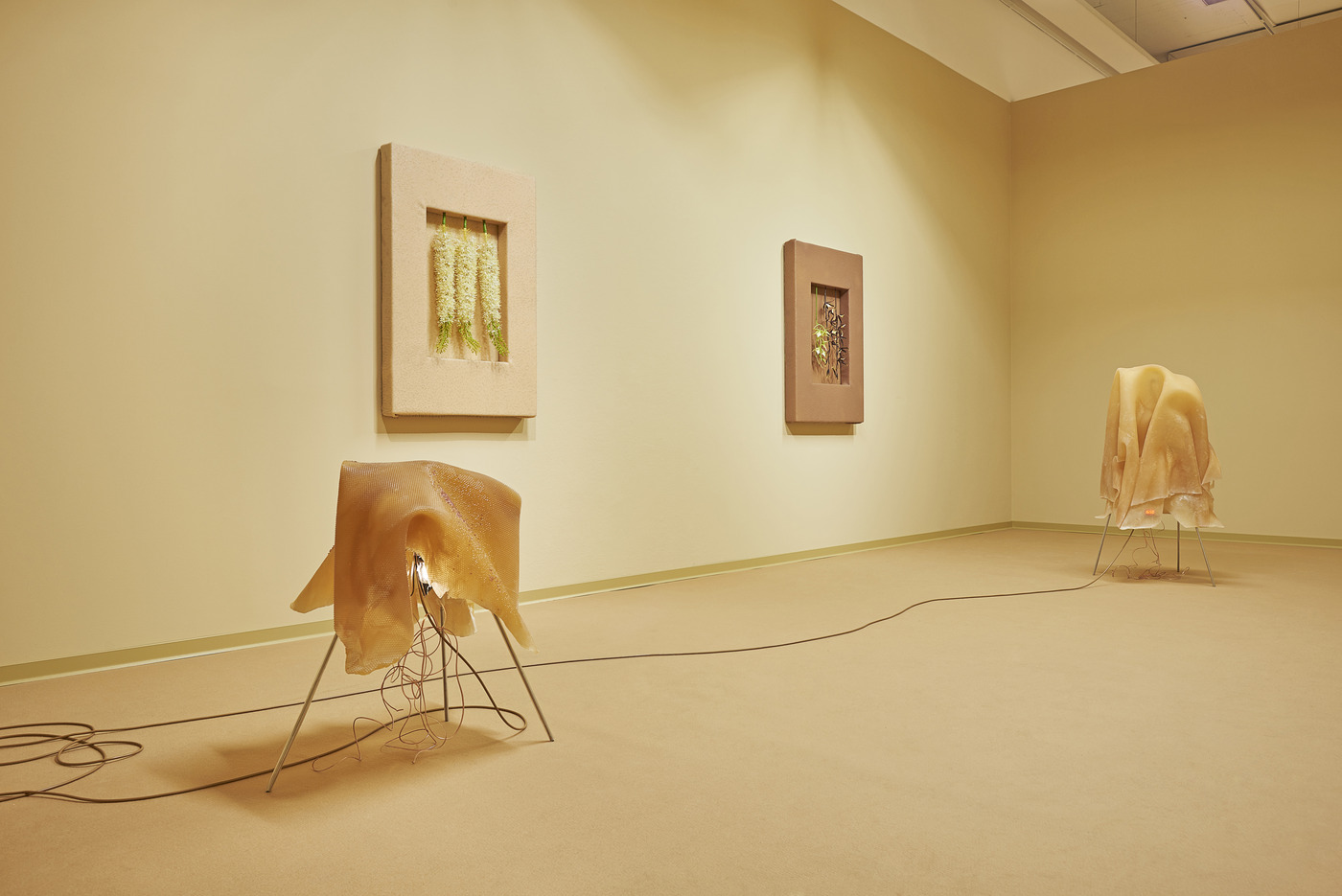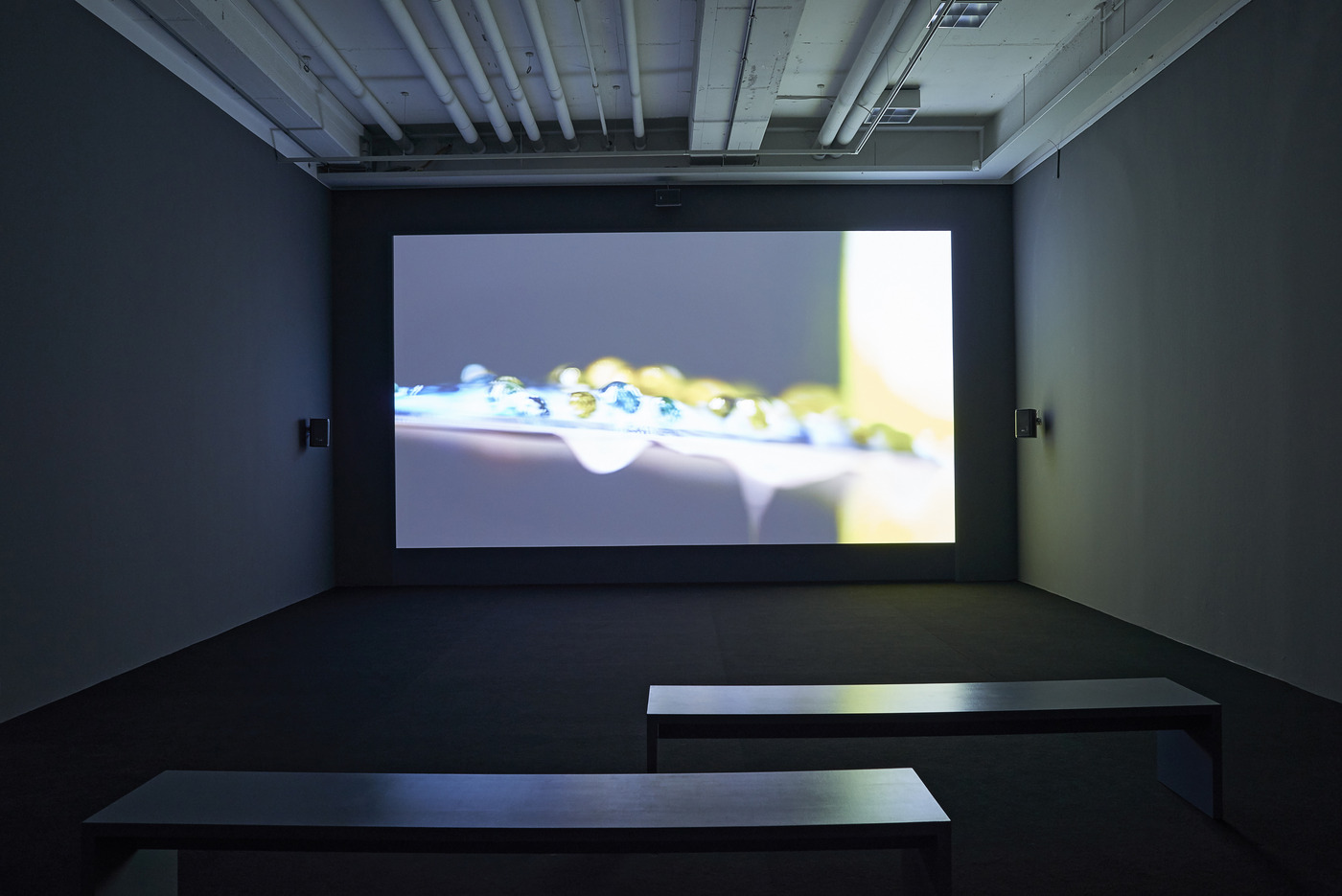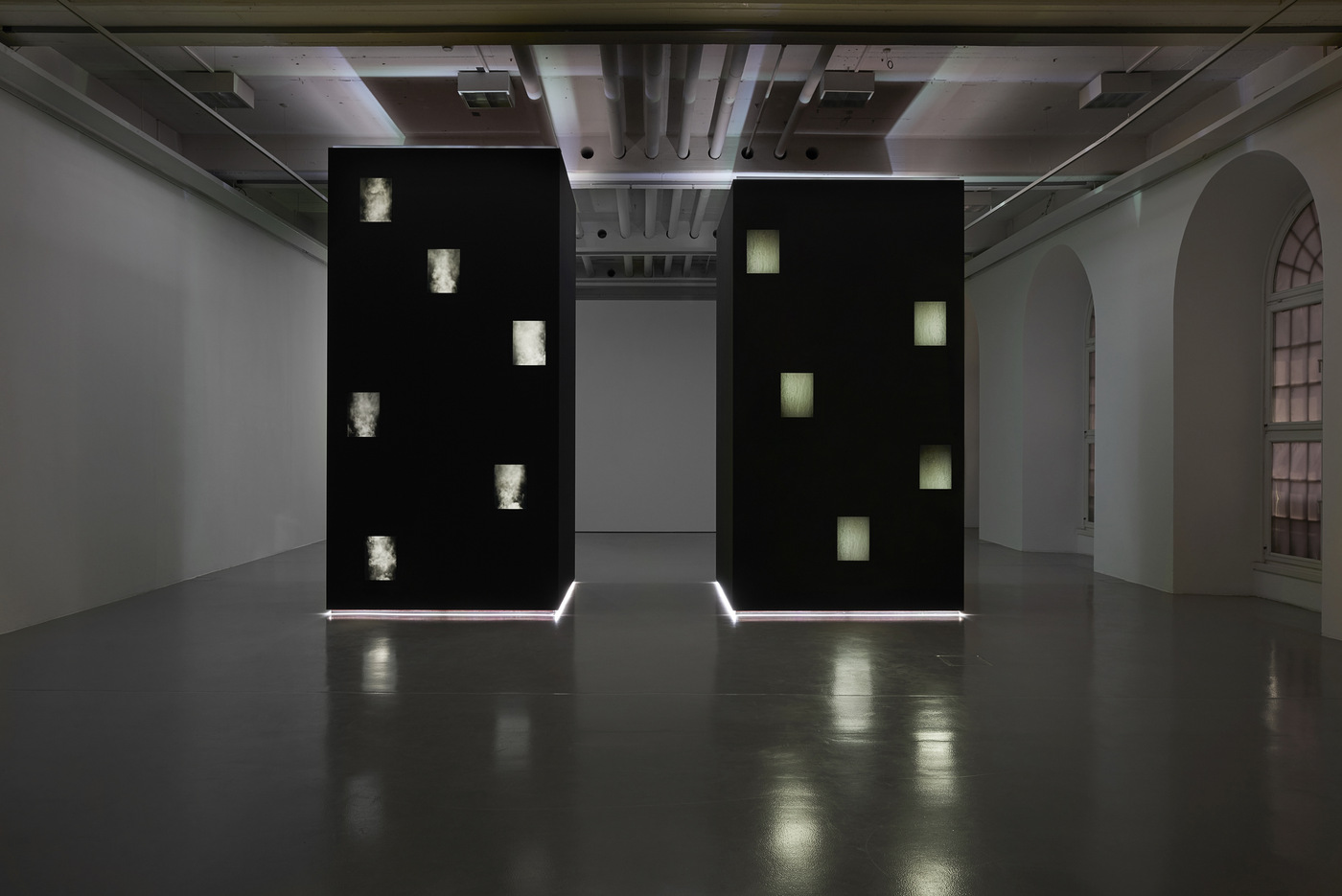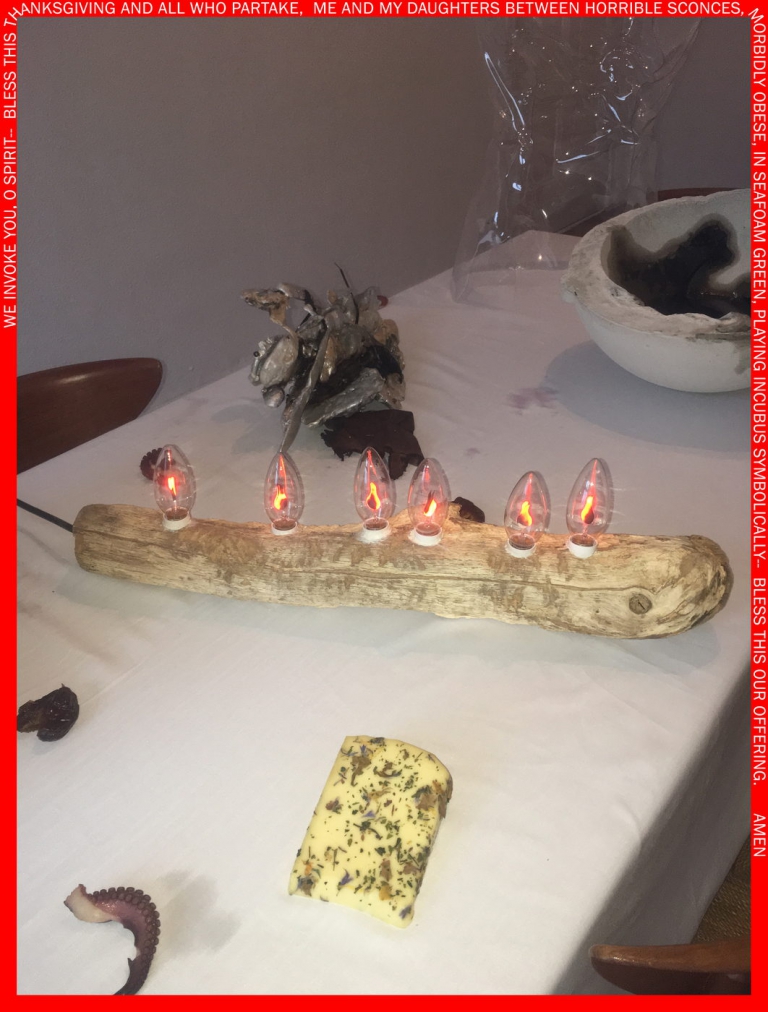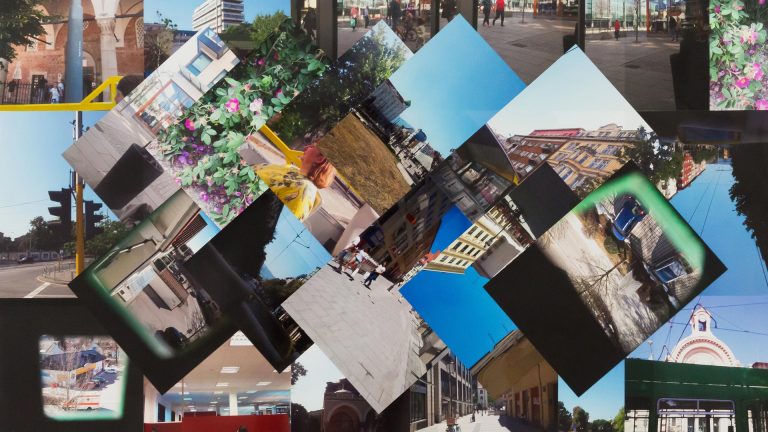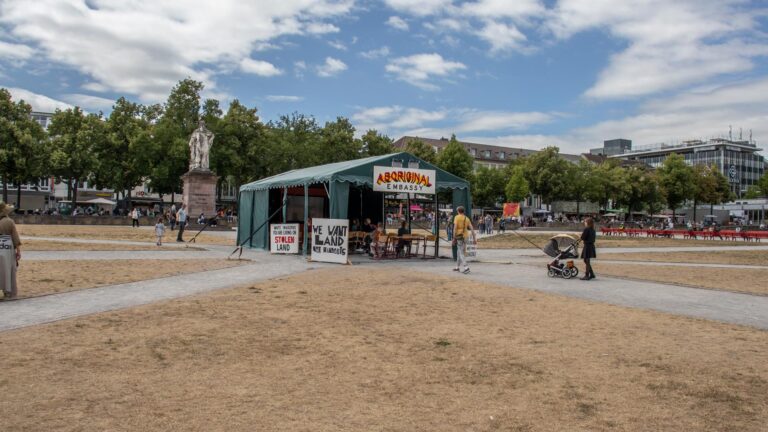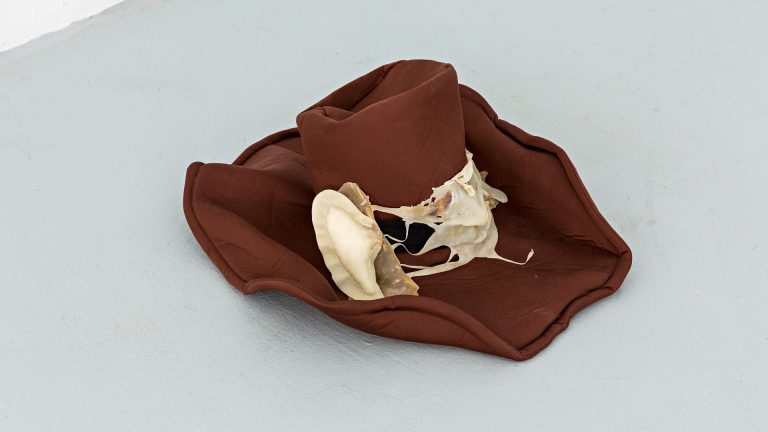Artist: Anicka Yi
Exhibition title: Jungle Stripe
Curated by: Susanne Pfeffer
Venue: Fridericianum, Kassel, Germany
Date: May 5 – September 4, 2016
Photography: Fabian Frinzel, all images copyright and courtesy of the artist and Fridericianum, Kassel
Note: Exhibition booklet can be found here
The origin of the word “hybrid” can be traced etymologically to two sources: Latin hybrida (mongrel, bastard) and Greek hybris (pride, arrogance). Unions between plants, human beings, animals and technologies give rise to flexible hybrids; organic and synthetic materials mutate into amorphous, indefinite beings. Neuroscience, bioengineering and science fiction enter into tacit relationships of complicity, blurring the once clearly delineated boundary between the natural and the artificial. For her first institutional solo exhibition in Germany, Anicka Yi (b. 1971) compacts the ground floor of the Fridericianum into an expansive installation. With sculptural and video works all produced specifically for the exhibition, she creates a complex structure of hybrid forms. In the process, Anicka Yi takes up constructions of nature and brings them to collision with scientific and colonialist hubris.
In her work, Anicka Yi explores life forms, organisms and microbiological processes. Her approach is oriented towards the cosmologies of indigenous peoples from the Amazon region and follows a non-anthropocentric and non-hierarchical thinking—described by Eduardo Viveiros de Castro as a multinatural perspectivism. In her film The Flavor Genome (2016), for example, nature is not conceived in absolute terms, but assembled from a multitude of perspectives and perceptions. In scenic episodes, Anicka Yi depicts a fluid mutation of species, at the same time showing how biology can no longer be separated from its narrative, its biography. “Humanity still has not successfully metabolized the imperialist cultural pollution, the planetary despoliation, the vanished indigenous civilizations—key elements that comprise the flavor profile of the Tropics” (from The Flavor Genome). In search of stimulating aromas, new tastes and smells, the film’s protagonist does not differentiate between biotechnologically-produced and natural phenomena. “We were on the trail of the flavor genome. By elaborating perceptual worlds through flavors reality as an interlocking of perceived unique essences could be newly synthesized” (The Flavor Genome). The filmic exploration of the Amazon raises not only the question of how perceptions can be changed but also how sensory experiences can allow for a different understanding of perception. Taking these new sensory discoveries as its point of departure, The Flavor Genome imagines a chemical synthesis of plant and animal forms. For instance, the secretion of the stigmata of such a mythical hybrid can be used to obtain an essence with which various human personas can be created for consumers to try on like colored contact lenses. This essence is a condensate of fear and anxiety that can then be used to shape a hybrid identity. It remains an open question whether the result leads to more empathy on the part of the “wearer” or causes confusion because too many personas can be chosen. The complexity of one’s own persona would no longer be bound to immediate experience: the body is but a storage medium that can be played at will.
Anicka Yi’s sculptures are similarly indefinable in their fluid transitions—fur grows on cages, artificial honeycombs and intermediary beings populate the spaces of the Fridericianum. The atmosphere of these spaces and amorphous sculptures generates a subtle sense of anxiety. Anicka Yi interweaves sensual impressions, new developments in genetics and biotechnology with the speculative moment of possible visions of the future in a biofiction where bio diverse intelligence sharing is at the core. Here, sensory deception, manipulations of the environment and the insoluble unity of the artificial and the natural create a new reality.






